Luisa Triana, 90 years of memories and achievements
Luisa García Garrido, Luisa Triana, is the current elder of flamenco and Spanish dance, sparkling and lively at the age of 91 which she is happy to brag about. A successful painter for many years, with her favorite subject matter being flamenco, in particular female dancers.
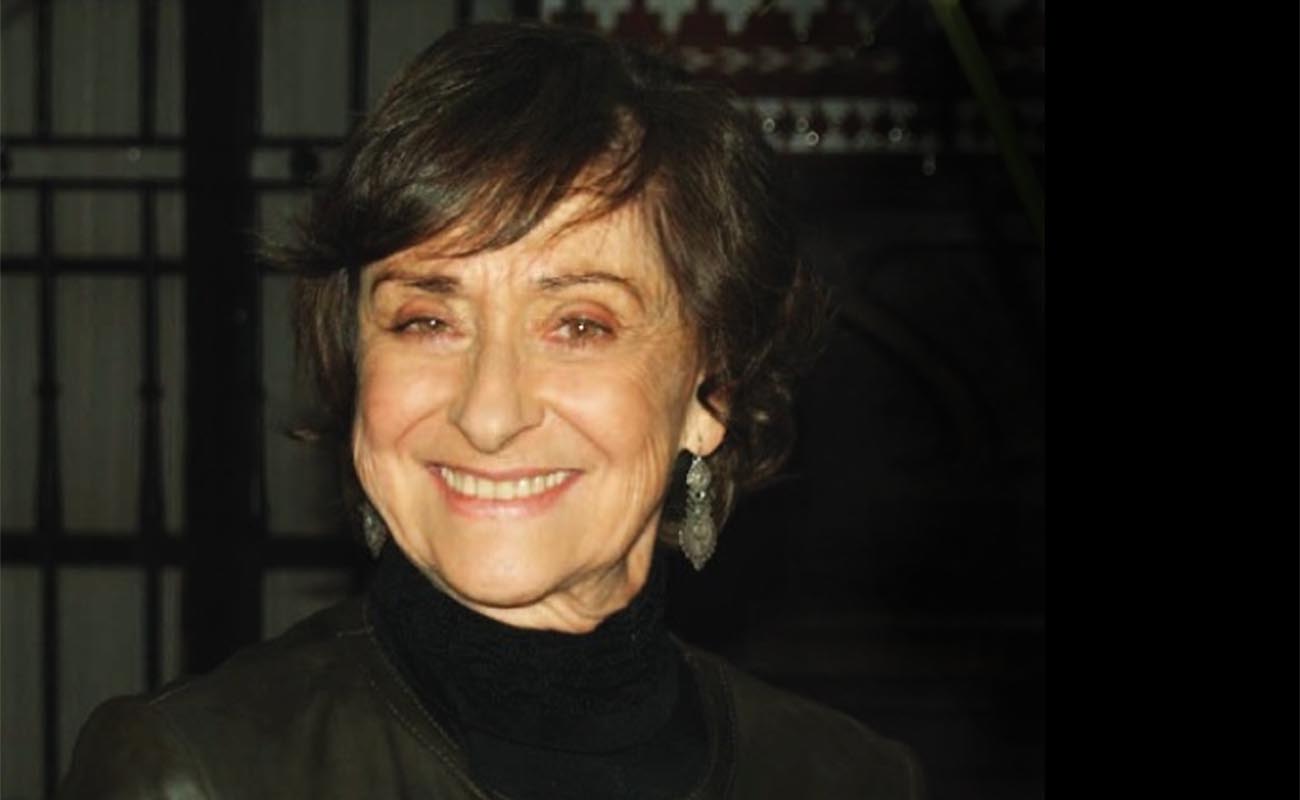
Since the first time she danced on stage at the age of seven at the Odeón Theater in Buenos Aires, more than eight decades have come and gone. Luisa García Garrido, Luisa Triana, is the current elder of flamenco and Spanish dance, sparkling and lively at the age of 91 which she is happy to brag about. A successful painter for many years, with her favorite subject matter being flamenco, in particular female dancers whose beauty she captures on canvass.
She fled the Spanish civil war with her father, Antonio Triana, who for years was the choreographer and artistic partner of Carmen Amaya. After a time in Paris, they reached the United States, specifically Hollywood when its film industry was in full development. Luisa appeared dancing in numerous movies and eventually formed her own dance company with which she toured North and South America.
Luisa Triana currently lives in Las Vegas, Nevada, United States. It’s a privilege to speak with her.
Luisa, at the present time you’re probably the person who has seen the greatest number of flamenco dance stars. Have you been able or willing to accept the new trends?
Flamenco is distinguished from other types of dance due to its rhythmic structure which also has tonality in its accents and shading. The trend now is speed, requiring a lot of power which often takes precedence over art. I believe the evolution of flamenco should return to having its artistic nuances.
What do you think your much-admired Carmen Amaya would have answered to the previous question?
I honestly don’t think she would have liked the absence of nuance. I can just see her putting on her dance shoes and getting ready to dance with all that expressive power, starting out with an “olé!…rhythm is the rule!”
With the perspective that comes with time, what stars of flamenco dance would you say have been the most important of those you’ve seen?
Without a doubt, Carmen Amaya… Argentinita and Pilar López, Antonio and Rosario. And José Greco who brought some very good artists. Farruco and family! My father Antonio Triana. There are more, but my memory fails me. I was in direct contact with Carmen from 1940 until 1943 when she and my father were partners. In New York after 1955 when I was starting out on my own, we picked up again.
Do you attend dance shows when they come to town? What contact do you have with flamenco at this point?
Lately I’m very isolated. It’s been a long time since any Spanish dance company has come to town.
Which do you prefer, flamenco or Spanish dance?
Flamenco, without a doubt. It fills me with emotion and gives me life, it’s very powerful.
Did you ever take actual dance classes, or did you learn by watching and imitating? You appear in photos with Carmen and the rest of the company, a privileged atmosphere for learning.
My father was my maestro, plenty of discipline and technique. In addition to being Carmen’s dance partner, he also partnered Argentinita and Pilar López. He taught me both flamenco and Spanish dance. Argentinita put me on stage to dance in Buenos Aires. It was the civil war that made us leave Spain. My father toured the United States with Carmen several years.
You once told me Israel Galván studied with you in his youth. Could his talent be noticed at that time? Was he a good student?
That style of Israel’s was part of his personality from a very young age. His father wanted me to teach him something from my repertoire. He quickly picked up what he wanted, and followed his own path. There was a time when artists consulted me to formulate their own ideas and have some of my choreographies in their repertoire.
Las Vegas is like a big amusement park. There’s a Hispanic community, but is there interest in flamenco? Does it have a presence in nightclubs or tablaos, or is it lost among the vast diversity of the offering?
The hotels are very luxurious and cater to all tastes. There’s everything for tourism, but flamenco is scarce, some guitarist might play occasionally in a restaurant. The big night-clubs aren’t interested in flamenco, they want something more spectacular.
A few years ago, you moved to Triana after many years away. You returned to your homeland and seemed very happy. What made you go back to the United States, to Las Vegas no less?
Triana is my passion! I still remember and yearn to cross that bridge, be able to walk around and run errands, stroll with my cousins, have a coffee, greet the neighbors…and that fair! Yes, I was happy, and I’m grateful for having had the opportunity to live those years in Triana. However, my son was in the United States, and that’s why I returned.
Do people in the U.S. know who you are? Does anyone ask for dance classes?
My neighbors don’t know that I was a performer, we’re all seniors, but I get together with my son, grandchildren, and great-grandchildren very often.
Do people dance better now than before?
The technical level is incredible now! Young people work hard and reach new heights.
What memories have you of the years with Carmen?
From when I was a little girl the thing I most remember are the get-togethers she used to have at her luxurious house in Hollywood in the neighborhood called “Los Feliz”. Her little sister María and I, and a couple of other kids would play, and they gave us bread with tomato and olive oil, the pa amb tomaquet that’s so typical of Catalonia. We had a grand time, and even today, every time I eat bread with tomato, I remember those days.
I remember the rehearsals at the Hollywood Bowl with the symphony orchestra, in that huge shell, the atmosphere was very different from what she was used to, and she complained she couldn’t hear or feel the music. But in the end she gave everything in her dancing like always. I remember on stage, the shows were unforgettable. Carmen touched everyone’s soul. She knew she was an extraordinary being.
I remember the day she died in 1963. It was a tremendous shock, I couldn’t believe it, I wasn’t even aware of her illness. The first thing I did was take out my brushes to paint her portrait.
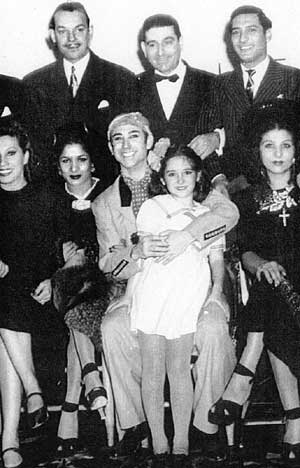
La Compañía Carmen Amaya. Aparecen Sabicas, con bigote, y Luisa Triana de pequeña con su padre. Archivo Luisa Triana.


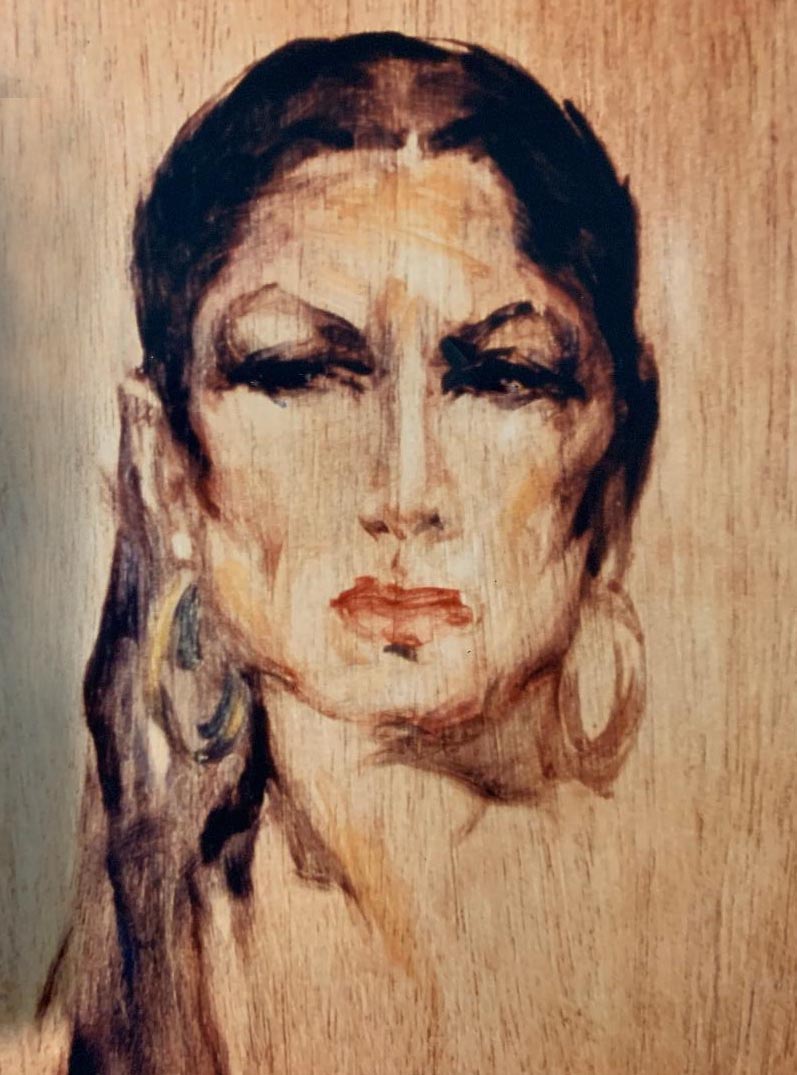
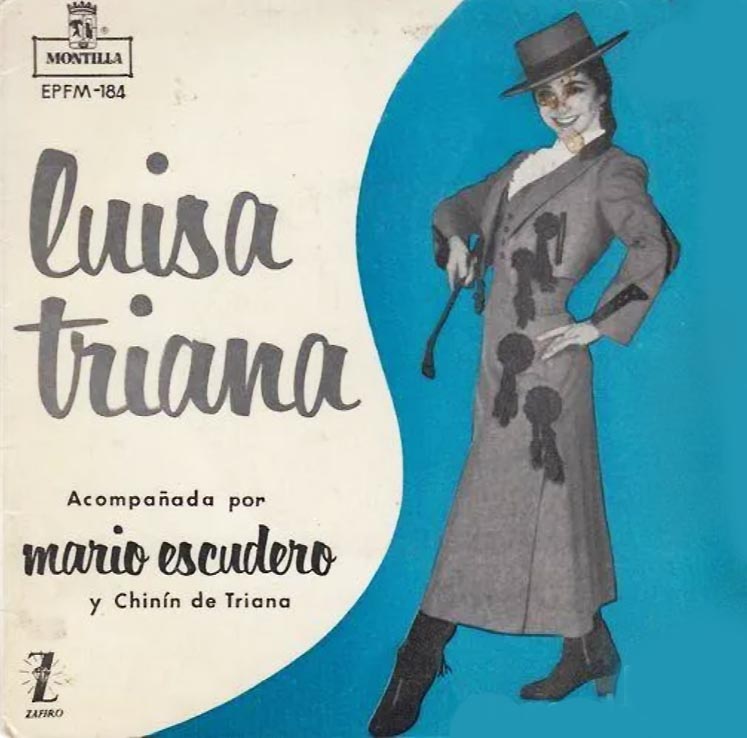
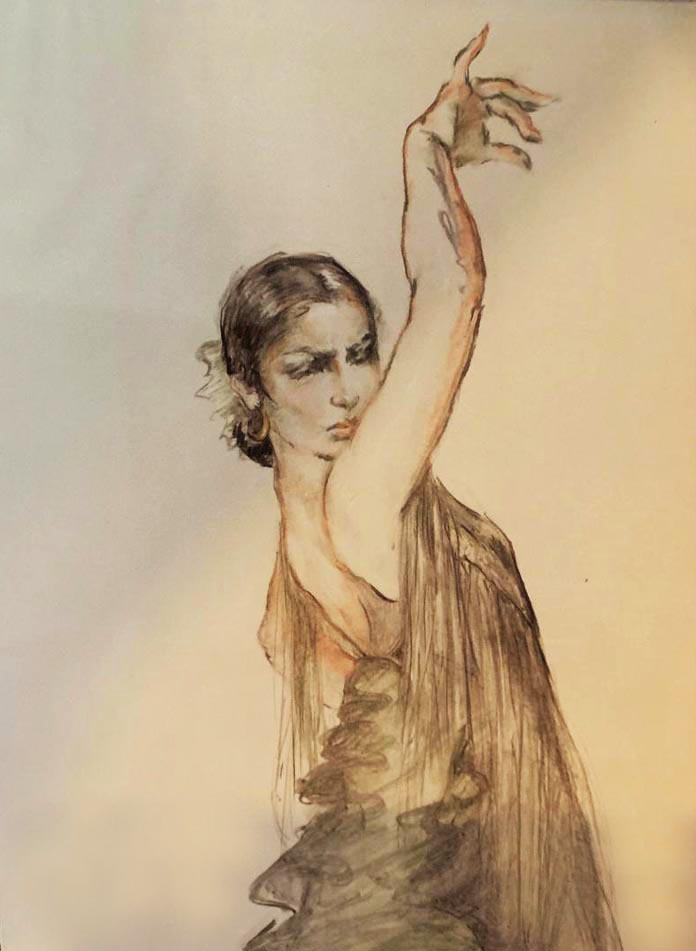


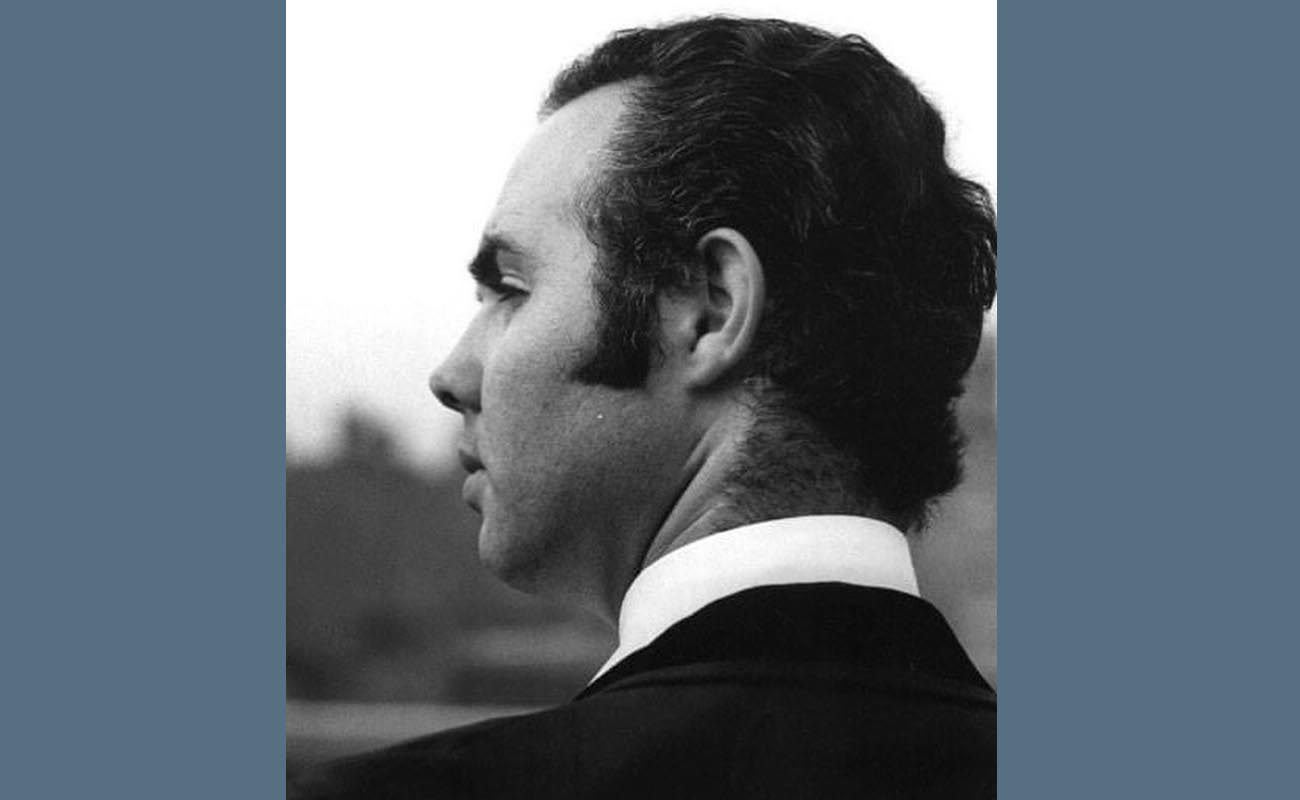
Pingback:Apr ’23: Future Flamenco Stars, Cooking Class, & More! – Flamenco Vivo Carlota Santana 27 April, 2023
Mimi Navarro 12 May, 2023
Luisa, do you sell your paintings?
Gracias,
Mimi Navarro
Santa Barbara, CA
Martha 9 October, 2023
Luisa,
My mother made costumes for your dance company that performed in the music center in Los Angele in late 1960s. Her name wa Cristina Mosqueda and she lived in East Los Angeles on Rowan Avenue. Cristina kept all your thank you notes and all your short notes that followed telling her how her costumes she made or altered were successful. I even remember your son coming over our humble home and playing with some kittens we has. I am the oldest daughter of Cristina, Martha and now have two granddaughters who would love to see a post of you with one of her grandmother’ creations. Can you tell me or direct me where I can fi d one or can you send me one. You put me mom who was a lone seamstress from Guadalajara, Mexico on the map. She was humble and hard working. She made costumes for Dolores Montes etc. She made her last data de cola in her 80s. I still have some scraps of materials she kept of the costumes she made for you and your troup, I recently went to Spain and got to see the wonderful sites and museums. My name is Martha Suniga and I hope to hear from you. I am always talking to my granddaughters and letting them know that their grandmother Cristina was very talented and worked for gifted and talented woman like you. In this world for a young girl has a lot of history for a relative. You were an amazing dancer. I will never forget seeing you on that stage at the Music Center in the 60’s and how around my mother was to see her name of credits for her work. Hasta pronto Martha Mosqueda Suniga
Andrea Wareham 26 November, 2023
Luisa,
I have many fond memories of the years that I studied first in class and then in private lessons.
Because I was too tall, you weren’t able to use me in your dance group in Santa Barbara.
After that you moved to Spain to paint.
You gave me such a love for flamenco, I got a guitarist and did some performing after I left
studying with you.
Hope you’re well.
Andrea
andreawareham@yahoo.com